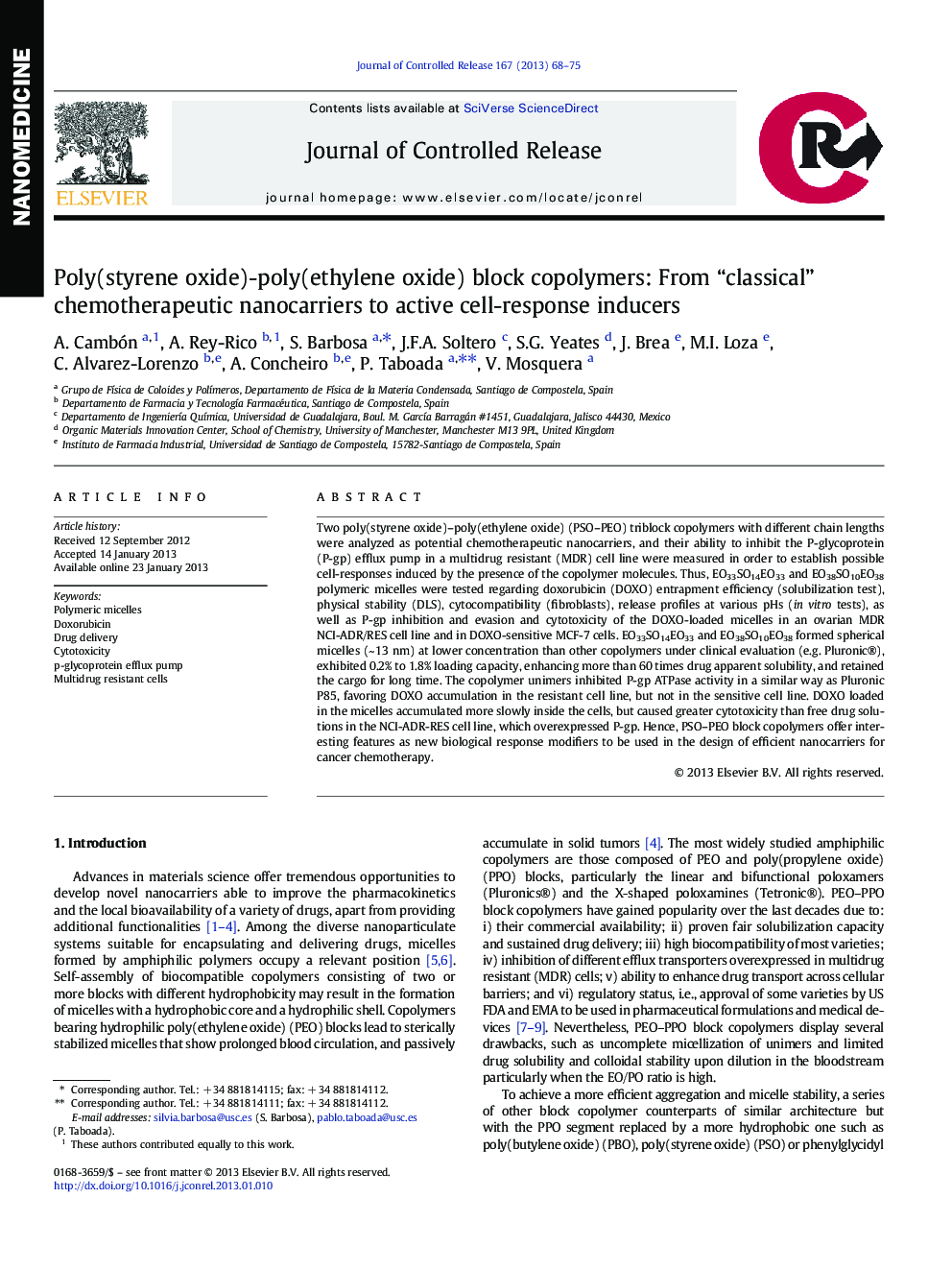| کد مقاله | کد نشریه | سال انتشار | مقاله انگلیسی | نسخه تمام متن |
|---|---|---|---|---|
| 1424479 | 986724 | 2013 | 8 صفحه PDF | دانلود رایگان |

Two poly(styrene oxide)–poly(ethylene oxide) (PSO–PEO) triblock copolymers with different chain lengths were analyzed as potential chemotherapeutic nanocarriers, and their ability to inhibit the P-glycoprotein (P-gp) efflux pump in a multidrug resistant (MDR) cell line were measured in order to establish possible cell-responses induced by the presence of the copolymer molecules. Thus, EO33SO14EO33 and EO38SO10EO38 polymeric micelles were tested regarding doxorubicin (DOXO) entrapment efficiency (solubilization test), physical stability (DLS), cytocompatibility (fibroblasts), release profiles at various pHs (in vitro tests), as well as P-gp inhibition and evasion and cytotoxicity of the DOXO-loaded micelles in an ovarian MDR NCI-ADR/RES cell line and in DOXO-sensitive MCF-7 cells. EO33SO14EO33 and EO38SO10EO38 formed spherical micelles (~ 13 nm) at lower concentration than other copolymers under clinical evaluation (e.g. Pluronic®), exhibited 0.2% to 1.8% loading capacity, enhancing more than 60 times drug apparent solubility, and retained the cargo for long time. The copolymer unimers inhibited P-gp ATPase activity in a similar way as Pluronic P85, favoring DOXO accumulation in the resistant cell line, but not in the sensitive cell line. DOXO loaded in the micelles accumulated more slowly inside the cells, but caused greater cytotoxicity than free drug solutions in the NCI-ADR-RES cell line, which overexpressed P-gp. Hence, PSO–PEO block copolymers offer interesting features as new biological response modifiers to be used in the design of efficient nanocarriers for cancer chemotherapy.
Figure optionsDownload high-quality image (211 K)Download as PowerPoint slide
Journal: Journal of Controlled Release - Volume 167, Issue 1, 10 April 2013, Pages 68–75